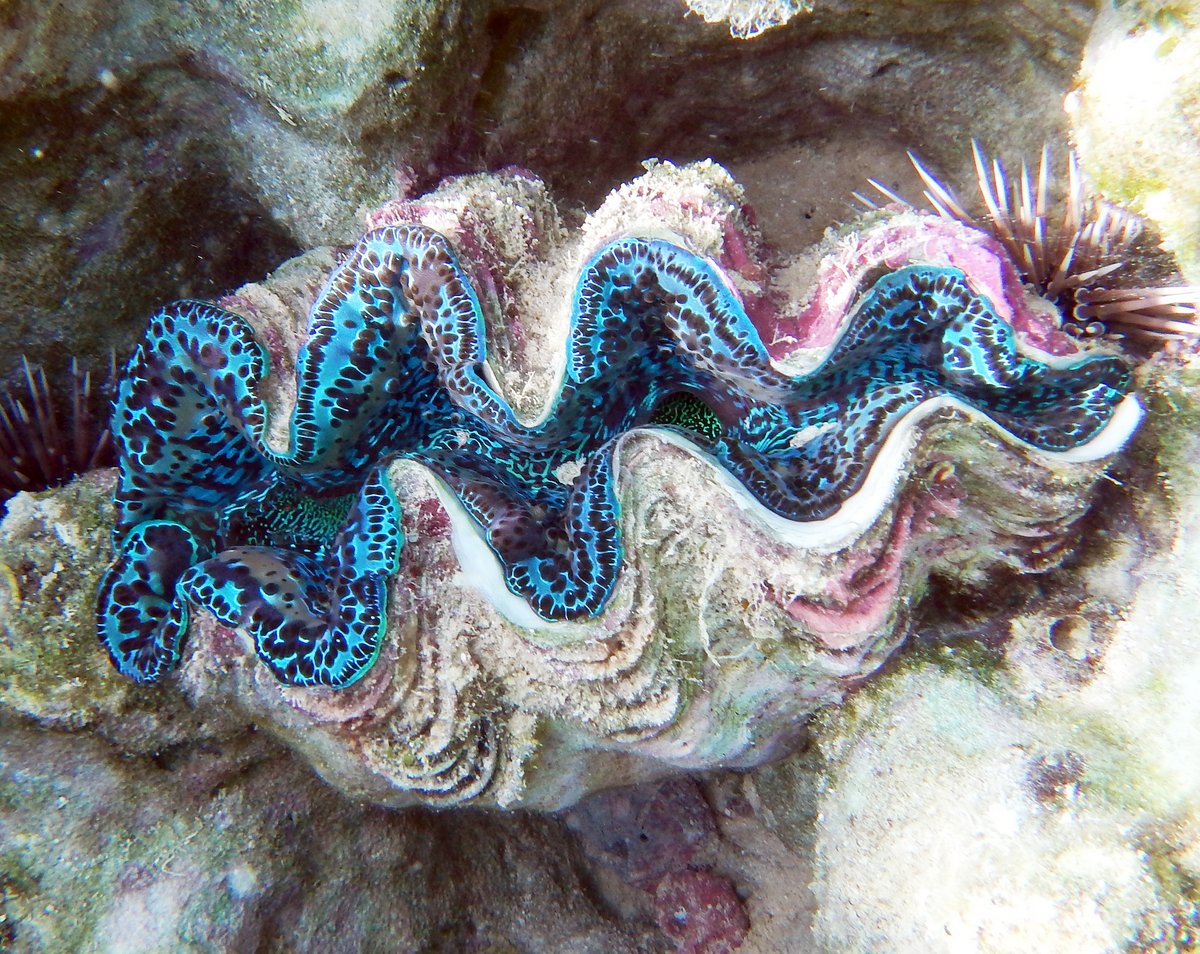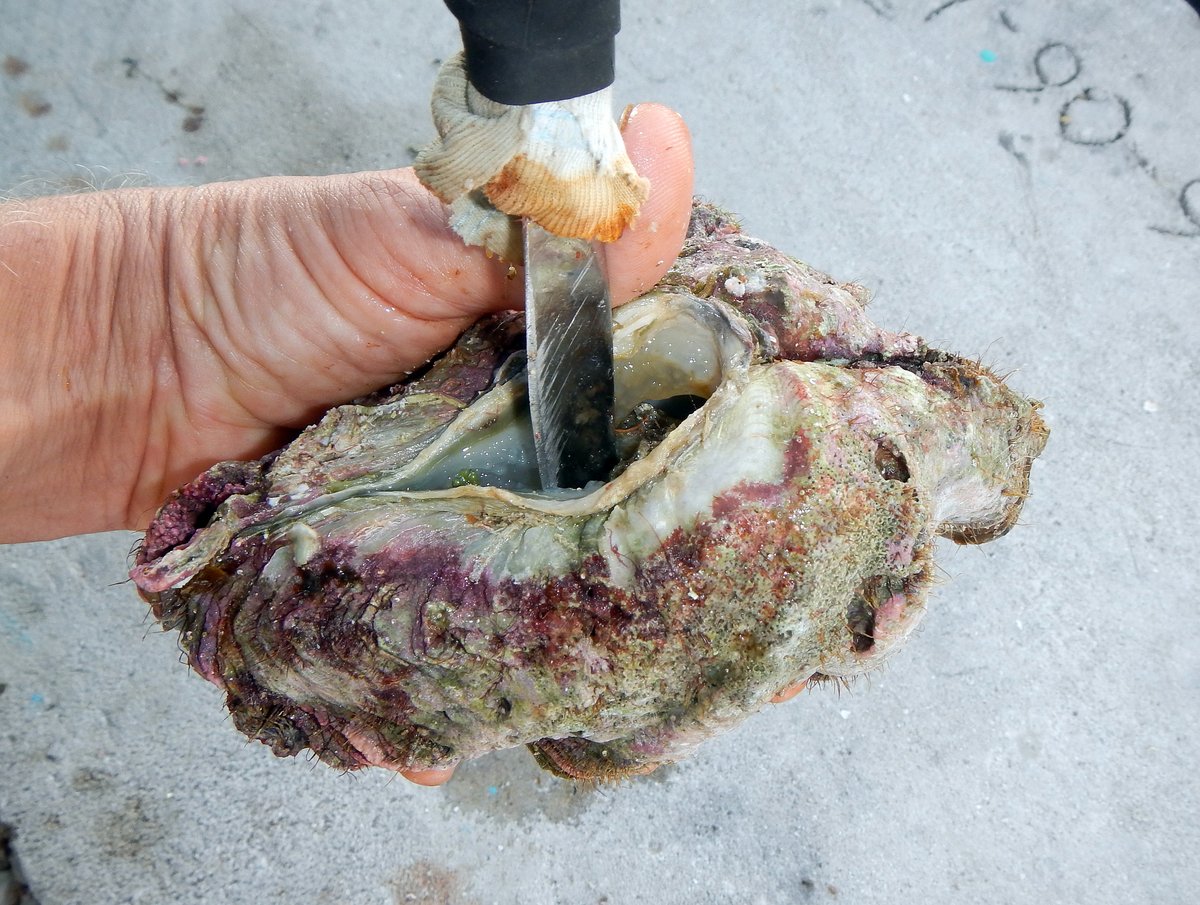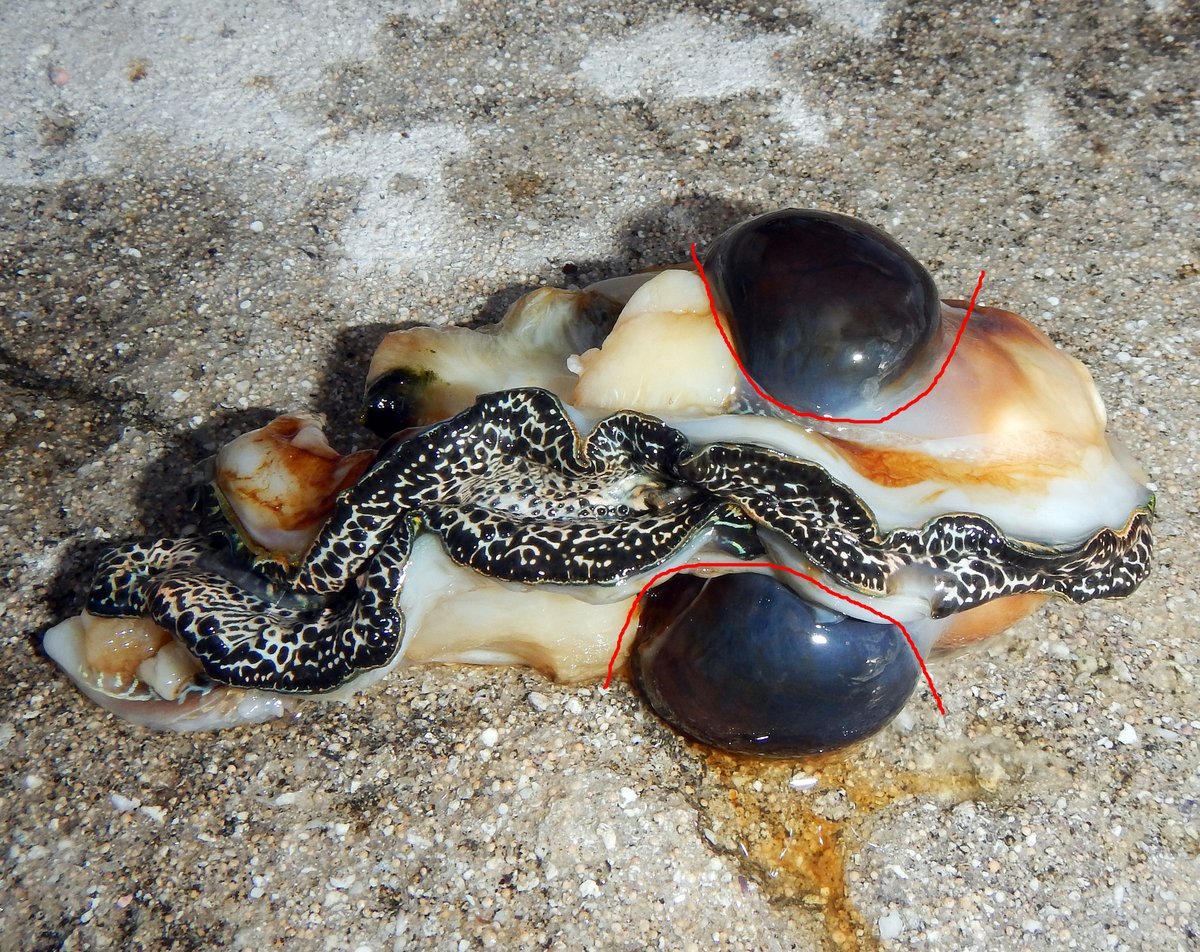| A dozen will typically feed four people |
When harvesting the clams, the lips of the clam vary in colour, which I believe is just a random colour and has nothing to do with the age or taste of the clam. When gathering clams, most of the time they can be pulled from the rock or reef with a twisting motion by hand, but a lever such as a screwdriver is useful for the more tenacious ones.
The clam has a pointed, oval-shaped hole at the rear, which is where it was attached to the rock. To open the shell, hold the clam so that the hole is uppermost with the pointed end towards you (Photograph 1). Insert a knife into the centre of the hole and, holding the knife vertically, cut towards the pointed end of the hole (Photograph 2). This should kill the creature and you will feel the jaws of the clam relax.
Turn the clam over and insert the knife into the jaws just off-centre and, holding the knife against the inside of the jaw, use a sawing motion to cut the major muscle holding the creature to the shell (Photograph 3). Rotate the shell and repeat the process on the other half of the jaws. You should now be able to open the jaws and completely separate the creature from the shell.
You now need a sharp knife, a cutting board and a container for the edible part of the clam. No doubt the clam appears to be a sloppy mess, but you should be able to identify two black sacks either side of the coloured lips (Photograph 4). You need to remove these with a knife. Try to remove most of it, otherwise the clam will taste bitter. It's probably best to have lots of water to do this as it is a messy job and you will constantly need to wash the creature, your knife and your cutting board.
Once the black sacks have been removed, flip the creature over and look for a brown "foot" on the end of a white muscle. I think that this is the part that the clam uses to attach itself to the rock - this needs to be removed with the knife (Photograph 5 shows the foot with one of the black sacks still in place).
A final rinse in water and it's ready to be made into a Conch Salad or a Clam Curry.






